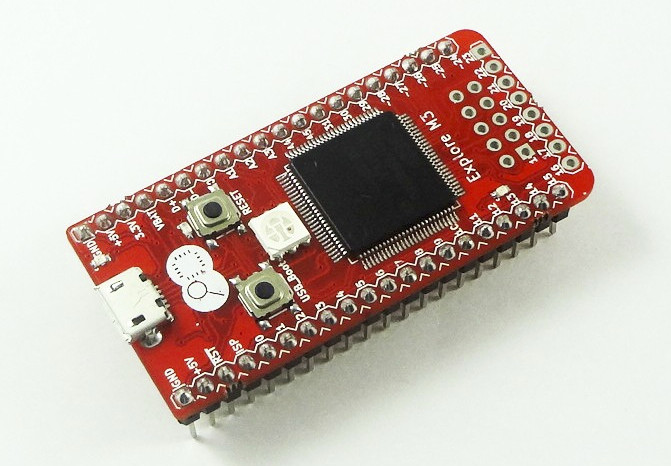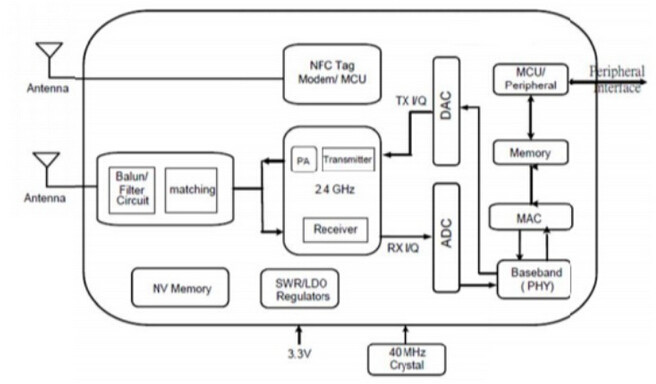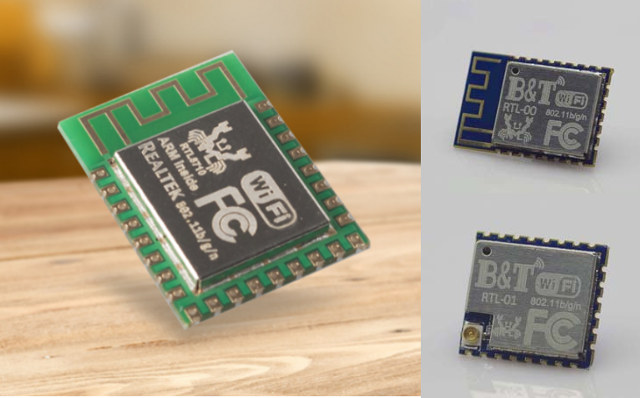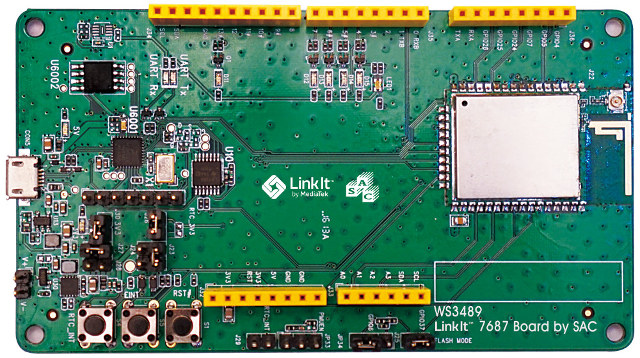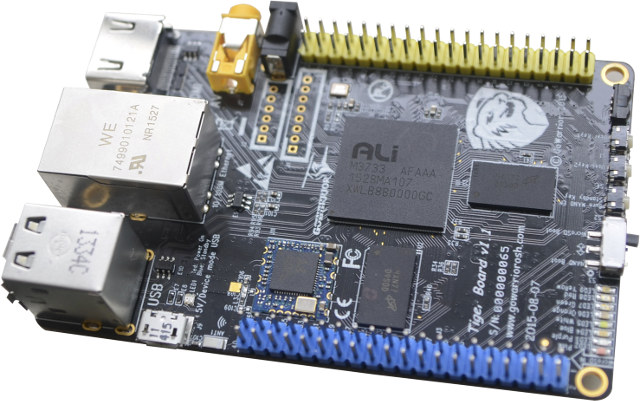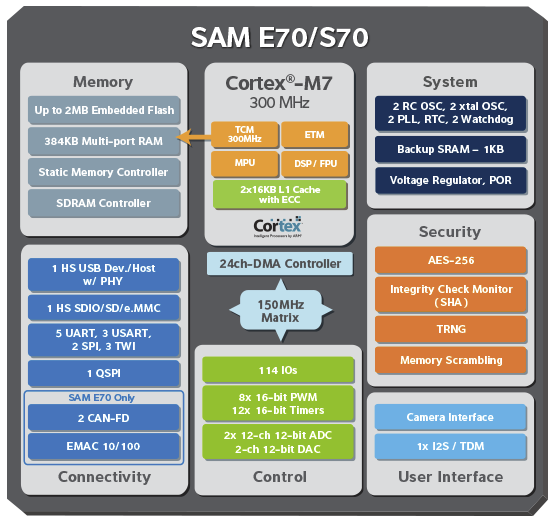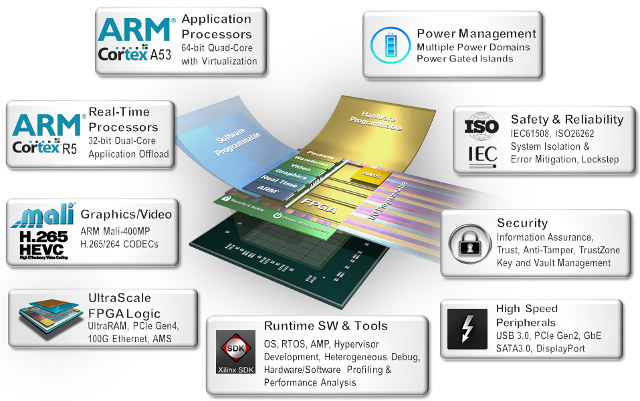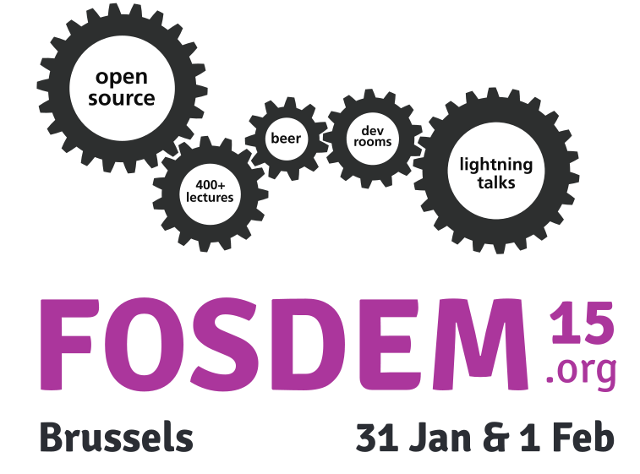Explore M3 is an ARM Cortex M3 development board powered by a micro USB port, with plenty of I/Os, Arduino compatible, and the developers have also written many tutorials to help people getting started as fast and easily as possible. A starter kit with cables and sensors is also available with the board. Specifications: MCU – NXP LPC1768 ARM Cortex M3 @ up to 100MHz with 512KB flash, 64KB RAM, USB – 1x micro USB 2.0 OTG port for programming and power Expansion Headers – 2x 20-pin male headers + 8-pin unpopulated header with 38x GPIOs, 4x UARTs, 2x CAN, 2x SPI, 2x I2C, 6x PWM, 5x ADC, 1x DAC, 2x interrupt pins, I2S audio, and power signal Debugging – JTAG/SWD Debug connector Misc – USB boot and reset buttons Dimensions – 55mm x 25mm The hardware is somewhat similar to mbed LPC1768 board but with a few more I/Os. […]
Development Resources for Realtek “Ameba” RTL8710, RTL8711, and RTL8195 WiFi SoCs
We were made aware of a potential ARM based ESP8266 competitor last week with Realtek RTL8710 WiFi modules selling for about $3.5 shipped per unit, and under $2 per unit for larger orders (100+ pieces). Hardware is good, but for a platform to be successful, or even just useful, you also need software support. So I started doing some research into IoT-Tech BBS and asked ICStation for an “SDK” for the module they sold. I ended up on this forum post providing an “Realtek RTL8710 SDK” via Baidu (password: brwp), which turned out to be about the same as the Google Drive link provided by ICStation, and only contain minimal documents, as well as cracked Windows IAR Embedded Workshop and JLink tools. There are also some more technical details in Chinese only in another forum post, and well as B&T RTL8710 module datasheet (PDF). However, if you don’t read Chinese […]
An Alternative to ESP8266? Realtek RTL8710 ARM Cortex-M3 WiFi IoT Modules Sell for $2 and Up
ESP8266 WiFi modules initially stormed the maker market for IoT applications thanks to their low price, and later it became the dominant WiFi IoT platform for hobbyists thanks to its large community of developers. But technology progresses over time, and it’s always fun to look out for new solutions, and Realtek RTL8710 could prove to be an interesting alternative with its ARM Cortex-M3 processor @ 166 MHz, a little more user memory (48KB), audio support, faster WiFi performance, while still keeping a low price, as modules can be purchased for $3.90 on ICS station, a little more on eBay, and as low as $1.95 per unit on Aliexpress including shipping if you purchase 100 pieces or more. A Chinese website as a side-by-side comparison between Realtek RTL8710 and Espressif ESP8266, which I also found translated into English. Realtek RTL8710 Espresif ESP8266 Package QFN-48 (6×6 mm) QFN-32 (5×5 mm) CPU ARM […]
$20 MediaTek LinkIt 7687 Arduino Compatible WiFi IoT Board Runs FreeRTOS
MediaTek Labs has already launched several WiFi boards for IoT applications starting with LinkIt ONE, and later LinkIt Smart 7688 running OpenWrt, and the company is now about to launch LinkIt 7687 HDK (Hardware Development Kit) powered by Mediatek MT7687F Cortex-M4 SoC, running FreeRTOS, and developed & produced by Silicon Application Corp (SAC). LinkIt 7687 (WS3489) board specifications: SoC – MediaTek MT7687F ARM Cortex-M4F MCU @ 192MHz with 352 KB SRAM, 64KB ROM, and 2 MB serial flash in package, integrated security engine, and built-in 802.11n WiFi. 8×8 mm 68-pin QFN package Connectivity – 1×1 802.11 b/g/n WiFi with on-module PCB antenna and U.FL connector. USB – 1x micro USB for power, debugging (Coresight Debug Access Port + Virtual COM) Expansion Arduino Uno Rev. 3 headers + an extra 8-pin extension connector. Mass Storage Device (MSD) flash programming interface. Reserved headers for power consumption (current) measurement. Misc – LEDs for […]
GoWarrior Tiger Development Board with ALi M3733 SoC To Support Android, Debian and FreeRTOS
There was a time when development boards were really hard to get for individuals with companies not wanting to waste their time with hobbyists, but the maker revolution changed all that, and now many companies want to get involved in “open source” board for the developer’s community. The latest board trying to emulate the Raspberry Pi is GoWarrior Tiger powered by ALi M3733 dual core cortex A9 processor with 1GB RAM, 4GB Flash, Ethernet and WiFi, HDMI and AV output, and two 40-pin expansion headers. Tiger board specifications: SoC – ALi M3733-AFAAA dual Cortex A9 processor @ 1.0 GHz with ARM Mali-400 MP2 GPU System Memory – 1GB DDR3; dual channel 1600 MT/s, 800MHz Storage – 4GB on-board NAND Flash + micro SD slot Video & Audio Output – HDMI 1.4 port up to 1080p, with support for HDCP and CEC, 3.5 mm AV jack Connectivity – 10/100M Ethernet, 802.11 […]
Atmel SAM S70 and SAM E70 Cortex M7 MCUs, SAM V71 Xplained Board Are Now Shipping
ARM Introduced Cortex M7 IP in September, and ST Micro simultaneously announced its STM32F7 Cortex M7 MCU clocked up to 200 MHz, and boards are now available, including some running Linux. But two other companies have licenses Cortex M7, Freescale with its Kinetis KV5x micro-controllers which are yet to be mass-produced, and Atmel which has recently announced their SAM S70 and E70 micro-controllers are now in mass production. SAM E70 and S70 have similar features, but E70 offers some extra interface like CAN and Fast Ethernet: ARM Cortex-M7 core running at up to 300MHz (1500 CoreMark) Up to 2MB Flash and 384kByte SRAM Floating point unit (FPU) for high-precision computing and accelerated data processing High-performance internal memory architecture with user configurable Tightly Couples Memories and System memory, and 16kB I and D-cache High Speed USB Host and Device with on-chip high-speed PHY CMOS image sensor interface AES hardware encryption engines, […]
Xilinx Introduces Zynq UltraScale+ MPSoC with Cortex A53 & R5 Cores, Ultrascale FPGA
Xilinx Zynq-7000 dual core Cortex A9 + FPGA SoC family was announced in 2012, and provides a wide range of SoC with features and price range, and led to low cost ARM + FPGA such as ZedBoard, and more recently Parallela and MYiR Z-Turn boards. The company unveiled its successor with Zynq UltraScale+ MPSoC providing five times more performance per watt, with four ARM Cortex A53 cores, two ARM Cortex R5 real-time MCU cores, a Mali-400MP GPU, an UltraScale FPGA fabric manufactured with 16nm FinFET+ process. There are two main sub-families in Zynq Ultrascale+ MPSoC for “smarter control & vision”, and “smarter network”. Both share the same processing systems (CPU, GPU, MCU, Peripherals, Security), but the networking family has beefier FPGAs, and lacks the H.264/H.265 video processing unit found in the control & vision version: Processing Systems Processor – Quad ARM Cortex A53 MPCore up to 1.3GHz Real-time Processor – […]
FOSDEM 2015 Schedule – January 31 – February 1 2015
FOSDEM (Free and Open Source Software Developers’ European Meeting) takes place every year during the first week-end of February. This year the developer-oriented event expects to bring over 5000 geeks to share ideas and collaborate on open source projects. Contrary to most other events, it’s free to attend, and you don’t even need to register, just show up. FOSDEM 2015 will take place on January 31- February 1 in Brussels. There will be 551 sessions divided into 5 keynotes, 40 lightning talks, 6 certification exams, and with the bulk being developer rooms and main tracks, divided into 7 main tracks this year: Languages, Performance, Time, Typesetting, Hardware, Security and Miscellaneous. I’m not going to attend, but it’s still interested to see what will be talked about, and I’ve concocted my own little virtual program out of the main tracks and developers’ rooms. There’s a few minutes overlap between some talks […]


